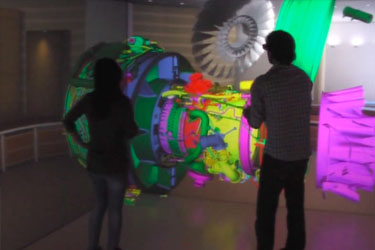From Learning Management to Learning Experience

As technology evolves, knowledge creation is accelerating at a rate beyond merely exponential. Not all that
long ago (1945), knowledge was doubling every 25 years. Today, we are clocking it at a frequency of around
every 13 months. And according to some experts, the Internet of Things will lead to an unimaginable rate of
every 12 hours.
At that pace, our need for continuous, self-directed learning is greater than ever if we hope to remain
competitive in this economy – and technology-enhanced education will continue to gain momentum as the
primary method for delivering it.
In meeting this challenge, forward-thinking institutions will become readily accessible, virtual gateways to
continuous education and collaboration, through which learners of all ages and stages in life may move in and
out at different times, from different places, and for different purposes. In doing so, these institutions will also
be forced to move beyond the concept of prescriptive learning management to embrace the mindset of
dynamic learning experience.
Why the conventional LMS is no longer enough
Let’s face it. While most of us cling to the traditional learning management system (LMS) as the transactional
foundation of online education, created to organize, package, and deliver our unique academic products, it is
becoming increasingly less viable in today’s plug and play world.
To begin with, most of these systems still fail to bridge the divide between the instructivist model of learning
(passive) that continues to govern much of higher education and the constructivist paradigm (active) that is
rapidly emerging in an economy where self-driven growth and development is the hallmark of professional
success.
Indeed, as a protected portal to the virtual campus, the LMS was designed to leave classroom content and
control firmly in the hands of the institution – or more specifically, the course instructor. So, it typically leaves
little or no room for learners to integrate and share other relevant content or customize their learning
environment and experience around professional interests and learning preferences. At the same time, the
legacy LMS is essentially a one-way street, making it difficult to cultivate a sense of community, in which
learners are free to connect and collaborate at will with both their instructors and each other.
Equally problematic, these platforms are built around a relatively standardized set of e-learning tools for
submitting assignments, giving exams, coordinating class discussion, and evaluating performance. Thus, they
are not, for the most part, designed to optimize the plethora of interactive digital tools and apps we might use
to create engaging, personalized and immersive learning experiences.
Where the future of virtual learning must take us
That said, make way for next generation virtual learning experience platforms and the many opportunities
they present to meet the growth and development needs of today’s so-called learning economy.
In moving beyond the “old think” of learning management to embrace the “new think” of learning experience,
we have a dazzling array of technology enhancements for creating a multimodal, multifaceted and media rich
virtual learning environment (VLE) that hits the mark across the following dimensions:
- Authentic learning.
Although the traditional industrial age model of education revolved around the
concept of learners as passive recipients of knowledge, today’s workforce requires authentic or “real
world” learning, rooted in real-life problems and contexts.
Consequently, the VLE of the future will incorporate interactive technologies, such as simulations and
holography, that offer hands-on practice and produce tangible artifacts, while fostering active
collaboration and supporting just-in- time assessment. It will also enable learners to integrate knowledge-
based with project-based learning, using some of the digital project management apps and presentation
tools they benefit from in their professional lives.
- Social learning.
Research shows that we learn best when we have ample opportunities to acquire and
share knowledge with others at the speed of need. That’s why the most effective VLEs will facilitate
continuous exchange, much in the same way that social media platforms do.
Just imagine replacing the instructor-controlled online discussion forum with an active real-time chat and
collaboration tool, such as Slack, that provides virtual connectivity on-demand, for sharing content,
resources, and insight around a given topic or interest. The same goes for engaging multi-player games
that promote collective knowledge application.
- Connected learning.
The very foundation of lifelong learning rests on our capacity to connect the dots
between formal and informal learning – classroom, work and everyday life. In accomplishing that
objective, next generation VLEs will support purposeful communities of practice around shared interests
and goals, while also providing access to real-world expert knowledge. Likewise, they will be designed for
both open networking and single sign-on access, using cutting-edge technologies to enable experiential
learning in dynamic and meaningful contexts.
- Multisensory learning.
Given that we process information through multiple senses – visual, auditory and
tactile – depending on our preferences and abilities, the VLE of the future will focus on accessibility for all.
For example, visualization will go beyond static images, recorded lectures and textbook content to
incorporate enhancements like virtual and augmented reality, screen readers and voice activation, which
tap into these senses to create dynamic, authentic and accessible learning environments and experiences.
